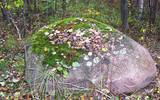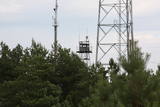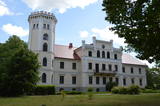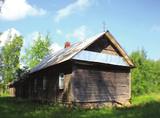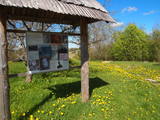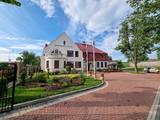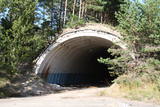| Nr | Nosaukums | Apraksts |
|---|---|---|
|
Dabas liegums veidots jūrmalas pļavu (Latvijā rets biotops) aizsardzībai, kas atrodas Lielupes grīvā – upes kreisajā krastā. Šeit atrodas viena no lielākajām purva mātsaknes atradnēm Latvijā. Nozīmīga putnu ligzdošanas vieta. Teritorija nav labiekārtota apskatei, tādēļ to ieteicams aplūkot no Lielupes pretējā (labā) krastā esošās Baltās kāpas, no kuras paveras plaša un pārskatāma ainava uz upes grīvu, palieņu pļavām un niedrājiem.
|
||
|
Āžmuguras akmens ir pelēkbrūngana trijstūra akmens prizma, kura
atgādina āža muguru.
|
||
|
Saimniecībā nodarbojas ar lopkopību, augļkopību, dārzeņkopību, piena un gaļas ražošanu un pārstrādi. Iepriekš piesakoties var iegādāties dažādu mājas produkciju, iemācīties siet sierus, cept savu maizīti pēc sentēvu receptēm. Viena no Latgales kulinārā mantojuma saimniecībām. |
||
|
Bijusī Padomju armijas Pāvilostas sakarnieku daļa bija izvietota Pāvilostā pie Sakas ietekas. Pēc pieejamās informācijas objekts atrodas novada pašvaldības īpašumā, Trūkst ziņas par tā pašreizējo pielietojumu.
|
||
|
Labiekārtots Driksas (Lielupes atteka) posms ar divu līmeņu promenādi, Baltijas valstīs unikālo Mītavas tiltu, skatu vietām, piemineklis „Jelgavas students” u.c. |
||
|
Brenguļu alus darītava atrodas bijušā Abula hidroelektrostacijas ēkā. Alu ražo no vietējo zemnieku izaudzētajiem graudiem, un alus (nefiltrēts, nepastarizēts) darināšanā izmanto senču zināšanas. Ceļa otrā pusē uzpludinātā Abula krastā izveidots alus dārzs, kurā var baudīt un iegādāties tumšo un gaišo Brenguļu alu, kā arī nobaudīt latviskus ēdienus. |
||
|
Skaistā ēka atrodas Lizuma centrā. Lizuma muižas īpašumi piederējuši dažādām dzimtām – vācbaltiešiem Tīzenhauzeniem, Malamiem un Volfiem. 1836. g. muižu iegādājas barons Otto Gotlībs fon Volfs, kura laikā muižas pils iegūst tagadējo veidolu – Tjudoru neogotikas stilu ar poligonālu torni. Jau no 1937. g. pilī izvietojusies Lizuma skola, kas ir viens no iemesliem, kādēļ saglabājusies ne tikai pati ēka, bet arī atsevišķi interjera elementi kāpņu telpā, Zilajā (Mednieku) zālē u.c. Pili ieskauj parks, kur atrodas muižas saimniecības ēkas – mūra klēts (te kultūras nams), 1876. g. celtais zirgu stallis (sporta halle), kalpu un dārznieka namiņš u.c. Bijušajā spirta brūzī ražo Gotiņas konfektes. Pils tornī izveidots Lizuma vidusskolas veidotais novadpētniecības muzejs. |
||
|
No Kronvaldu Ata (1837. – 1875.) – izcilā latviešu publicista, pedagoga un valodnieka dzimtajām mājām – „Lejas Miķiem” Priekules novada Krotē nekas līdz mūsdienām vairs nav saglabājies. Māju vietā uzstādīta piemiņas plāksne ar uzrakstu: „Katram tā vieta svēta, kur piedzimis, audzis” (A. Kronvalds). |
||
|
Izteiksmīgs zemesrags, kas klāts ar
dažāda lieluma laukakmeņiem.
|
||
|
Paramonovas vecticībnieku kopienas lūgšanu nams celts
1882. gadā.
|
||
|
Mērsragā atradās PSRS robežsardzes postenis, aiz kura sākās pierobežas režīma zona. No minētā posteņa mūsdienās nekas vairs nav saglabājies. Toties Mērsraga bākas tuvumā ir saglabājušās krasta robežapsardzes un prožektoru māju paliekas ar jumtiem.
|
||
|
MIKO konditoreja pēc savām īpašajām receptēm gatavo vairāk kā 100 produkcijas veidus - kūkas, pīrāgus, eklērus, cepumus. Sākotnēji tas tika darīts Saldū, bet kopš 2016. gada - arī Liepājā. Visu piedāvāto kopā ar kafiju iespējams nobaudīt nelielajās kafejnīcas telpās, turpat var veikt pasūtījumus, saņemt īpaši gatavotu produkciju un aplūkot mākslinieces Diānas Krūmiņas gleznas. Tiek piedāvāta arī apkalpošana un galdu klāšana banketiem un citiem svinīgiem pasākumiem. |
||
|
Latvijas un Igaunijas Neatkarības karā nenovērtējami nozīmīgas bija tieši Cēsu kaujas 1919.gada jūnijā.Atpūtas vieta-kempings "Amatas upe" ir lieciniece tieši šo un vairāku citu kara notikumu norisei - par to liecina vēsturiskie avoti muzeju arhīvos, kā arī mūsdienās redzamās aprises dabā. Par to, kur un kā sākās varoņstāsts, kas noslēdzās ar abu kaimiņtautu: igauņu un latviešu brīvību, ir iespējams uzzināt arī dažādu veidu programmās - stāstījumā par Cēsu kauju noslēpumiem un dažādu veidu pārgājienos vai izbraucienos pa galvenajām Cēsu kauju vietām, vai arī Cēsu kauju aizraujošā "izspēlēšanā". Atpūtas daļā - apmeklētājiem ir iespēja nobaudīt spēcinošu "kara zupu". Ekskursijas pa Cēsu kauju vietām-dažāda ilguma, izstrādāsim tieši jums piemērotu variantu! |
||
|
Vientuļš, mežu ieskauts un sens ceļš starp Košragu un
Dūmeli, ar ko saistīti daudzi interesanti fakti gan par Pitragupes dzirnavām,
kas ne reizi tā arī nav malušas (vēl manāmas uzbērumu paliekas), par kāda
avarējuša kuģa tvaika katlu, ko vietējais barons te izmantojis darvas tecināšanai,
gan kādreizējo zirgu ceļu, kas šķērsojis Bažu purvu, gan iespaidīgo Dūmeles
dižakmeni.
|
||
|
"Rokdarbu lādes" veikaliņā ir apskatāmi un iegādājami Sabiles sievu darinājumi – adījumi un tamborējumi – cimdi, zeķes, cepures, šalles un citas noderīgas lietas, kas kalpos kā lieliskas dāvanas un suvenīri. |
||
|
20.gs. sākumā celtajā vienīgajā jūgendstila ēkā Alūksnē šobrīd atrodas viesnīca. Vēsturiski ēkā kādu laiku kādreiz atradusies Dzelzceļa viesnīca, tāpēc arī tagadējai viesnīcai saglabāts oriģinālais viesnīcas nosaukums – Bahnhofs Hotel (tulkojumā no vācu un angļu valodas – Dzelzceļa viesnīca). Viesnīcā ir pieejami 9 numuriņi, un dažiem no tiem ir pieejamas arī papildvietas. Ir iespēja par papildus maksu saņemt siltas brokastis angļu gaumē. Viesnīcas viesiem tiek piedāvāts pusstundas bezmaksas baseina apmeklējums blakus viesnīcā “Jolanta”, kā arī elektrisko skrejriteņu un velosipēdu noma. Dažādu pasākumu rīkošanai ir pieejama arī banketu zāle. ! Numuriņu rezervācija ir jāpiesaka vismaz 12 stundas pirms ierašanās. |
||
|
Sena latgaļu apdzīvota vieta. 10. gs. Krāslavas novads nonāca Polockas kņazu, bet 13. gs. - Livonijas ordeņa pakļautībā. Līdz 18. gs. sākumam tā pastāvēja kā muižas centrs. 1729. g. par 1400 dālderiem Krāslavu nopirka Johans Ludvigs Plāters. Plāteru dzimta Krāslavā valdīja divus gadsimtus. 18. gs. vidū Plāteri uzsāka Krāslavas pils celtniecību. Pēc Polijas pirmās dalīšanas 1772. g. Latgali pievienoja Krievijai. Krāslava sāka panīkt. Pēc Rīgas – Daugavpils - Vitebskas dzelzceļa izbūves (1865. g.) pilsētas saimnieciskā dzīve atkal uzplauka. Krāslavu maz skāra 2. Pasaules kara laika notikumi, tādēļ mazskarta saglabājusies 20. gs. sākuma koka apbūve. |
||
|
Teearu saimniecībā gatavo dažādus ēdienus no Peipusa ezera zivīm, īpaši iecienīts ir šeit gatavotais marinētais, kūpinātais breksis. Iespējams nobaudīt arī pēc tradicionālām metodēm kūpinātu gaļu. Var pasūtīt arī ēdināšanas pakalpojumus. |
||
|
Cirpstenes zenītraķešu bāze kādreiz bijis nozīmīgs krasta apsardzes militārais objekts. Vizuāli interesanta un iespaidīga teritorija jūras krasta tuvumā, diemžēl nepietiekamas apsaimniekošanas dēļ - piesārņota un nesakopta. Tai iepretim paralēli jūras krastam aiz priekškāpas atrodas zenītraķešu palaišanas laukumi, kurus savieno betonēts ceļš. Šāds militārs veidojums pašā jūras krastā Latvijā ir vienīgais. Ziemeļos no kompleksa (Ventspils dienvidos) atrodas bijušās krasta baterejas.
|
||
|
Viduslaiku un pagājušā gadsimta sākuma kapsēta. To iejož apsūnojis akmeņu žogs. Te meklējami vairāki interesanti objekti: Heinriha Jakobsona (1832. – 1911.) - pirmā Mazirbes skolotāja kapa vieta (vecs metāla krusts atrodas pa kreisi no galvenajiem vārtiem), priede - valsts nozīmes dižkoks 3,17 m apkārtmērā, kuras stumbrā kāds viesstrādnieks padomju laikā ar motorzāģi izzāģējis kokā dori, lai tiktu pie bišu medus, rakstnieka Marģera Zariņa stāstā un lugā aprakstītā vecā Taizeļa prototipa – zvejnieka Nika Freimaņa (1845. – 1908.) kaps, Vilkača kaps - teikām un spoku stāstiem apvīta vieta – sens ar akmeņiem apkrauts kaps – it kā vienīgā Latvijā zināmā vilkača kapa vieta u.c. |
||

